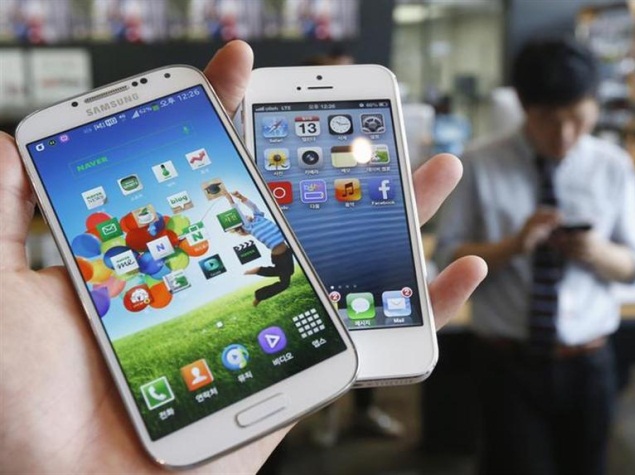Apple Inc and Samsung faced off once again in their long-running courtroom battle, with the iPhone maker asking jurors to award more than $2 billion for patent violations and Samsung trying to cast its rival as a sore loser in the smartphone market.
Attorneys made opening statements on Tuesday at the companies’ third trial in the last two years, in a San Jose, California federal court. Apple marketing chief Philip Schiller also testified about his shock at how similar Samsung’s smartphones were to the iPhone.
Apple attorney Harold McElhinny told the eight-member jury on Tuesday that Samsung had sold over 37 million phones and tablets that infringe its patents, and deserved an average royalty of $33 per phone.
“They will try to tell you that our inventions were and are trivial,” McElhinny said. “And that they are not valuable.”
McElhinny said Samsung could not compete with Apple and had reached a crisis by 2010. “It copied many many features,” he said.
However, Samsung attorney John Quinn said the South Korean company’s phones use Google Inc’sAndroid operating system. The features Apple is claiming to own were actually developed by Google, which did not copy Apple, he noted.
“We will prove to you that, yes, Apple is a great company but they don’t own everything,” Quinn said. “They don’t own the only way to search on phones.”
In attempting to win a sales ban against Samsung, Quinn said Apple is trying to recover its leading position in the smartphone market.
“What this case is really about is Apple trying to limit consumer choice and to gain an unfair advantage over its one main competitor, Google’s Android,” Quinn said.
Samsung also claims Apple violated two of its patents, and is seeking to ban the iPhone 5 (Pictures).
Both sides invoked Apple co-founder Steve Jobs, who passed away in 2011. McElhinny played video of Jobs launching the iPhone, saying the device embodied over 200 inventions and remade the way people communicate.
Quinn, however, pointed to a 2011 document written by Jobs, saying Apple was in a “Holy War” with Google and that the iPhone maker was in danger of losing its advantage as an innovator in the smartphone market.
On the stand, Apple’s Schiller rehashed testimony from previous trials and said “competition is great.”
But Schiller described his shock at seeing the similarities between Samsung’s smartphones and the iPhone. Under questioning from Samsung attorney William Price, however, Schiller said he was not familiar with the specific patent claims Apple was asserting in the case.
In rejecting Apple’s previous bid for a sales ban, Koh wrote that a consumer survey Apple submitted in the 2012 trial likely inflated the value that customers place on the smartphone features in dispute, meaning Apple does not merit an injunction. Apple is appealing that decision.
Apple has hired the same marketing expert to conduct a new consumer survey for the current trial. But this latest effort contains additional analysis about how Apple’s patented features drive consumer demand, according to court filings.
While the prior survey only concluded that there was general demand for the patented features, the new study attempts to quantify the proportion of customers Samsung would have lost if its smartphones did not contain those features, court filings show.
Samsung tried to stop Apple from presenting that evidence to the jury, arguing that the methodology was unsound. However, Koh agreed in a February ruling to allow Apple to use the study.
McElhinny told jurors that Samsung disabled its infringing search technology after Apple sued, but then restored it due to consumer demand. That demonstrates the value of Apple’s features, he said.
Quinn responded that the reason Samsung restored the search technology had nothing to do with consumer demand. Rather, Samsung received permission to restore the feature after an appeals court reversed legal rulings that had limited its use.
The trial is expected to last until early May.
The case in U.S. District Court, Northern District of California is Apple vs Samsung Electronics Co Ltd, 12-630.
© Thomson Reuters 2014






